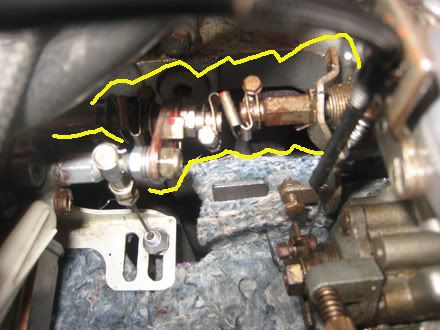jjbunn
Jedi Knight
Offline
I've taken out a very old fuel filter that was in the engine compartment ... I now have (in trunk)tank->filter->pump->(in engine compartment)copper tube running over bulkhead->carbs.
After removing the filter, the car is idling too fast: about 1800rpm. Prior to this, it was a little less than 1000rpm ...
Is the fuel delivery system now more efficient, and making everything too rich?
After removing the filter, the car is idling too fast: about 1800rpm. Prior to this, it was a little less than 1000rpm ...
Is the fuel delivery system now more efficient, and making everything too rich?

 Hi Guest!
Hi Guest!

 smilie in place of the real @
smilie in place of the real @
 Pretty Please - add it to our Events forum(s) and add to the calendar! >>
Pretty Please - add it to our Events forum(s) and add to the calendar! >> 

